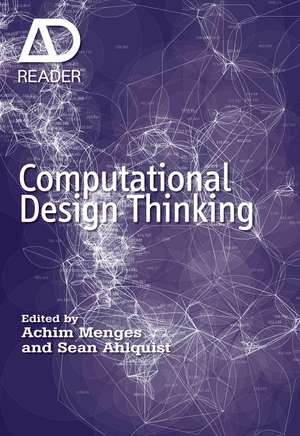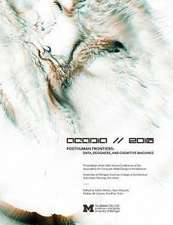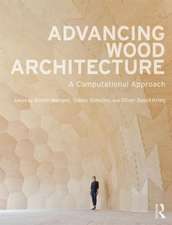Computational Design Thinking – AD Reader: AD Reader
Autor AM Mengesen Limba Engleză Paperback – 29 sep 2011
Preț: 271.17 lei
Nou
Puncte Express: 407
Preț estimativ în valută:
51.89€ • 56.35$ • 43.59£
51.89€ • 56.35$ • 43.59£
Carte disponibilă
Livrare economică 01-15 aprilie
Livrare express 15-21 martie pentru 32.91 lei
Preluare comenzi: 021 569.72.76
Specificații
Public țintă
Primary market• Architectural students Secondary market
• Architects
Cuprins
Notă biografică
Professor Achim Mengesis Director of the Institute for Computational Design at Stuttgart University. Currently he is also Visiting Professor in Architecture at Harvard University's Graduate School of Design and Visiting Professor for the Emergent Technologies and Design Programme at the Architectural Association in London. Sean Ahlquist is a research associate at the Institute for Computational Design at Stuttgart University. He has taught at University of California Berkeley and California College of the Arts and founded the design firm, Proces2. He holds a Master of Architecture degree from the Emergent Technologies and Design Programme at the Architectural Association in London.
Descriere
The current transition from Computer Aided Design (CAD) to Computational Design in architecture represents a profound shift in design thinking and methods. Representation is being replaced by simulation, and the crafting of objects is moving towards the generation of integrated systems through designer-authored computational processes.



















